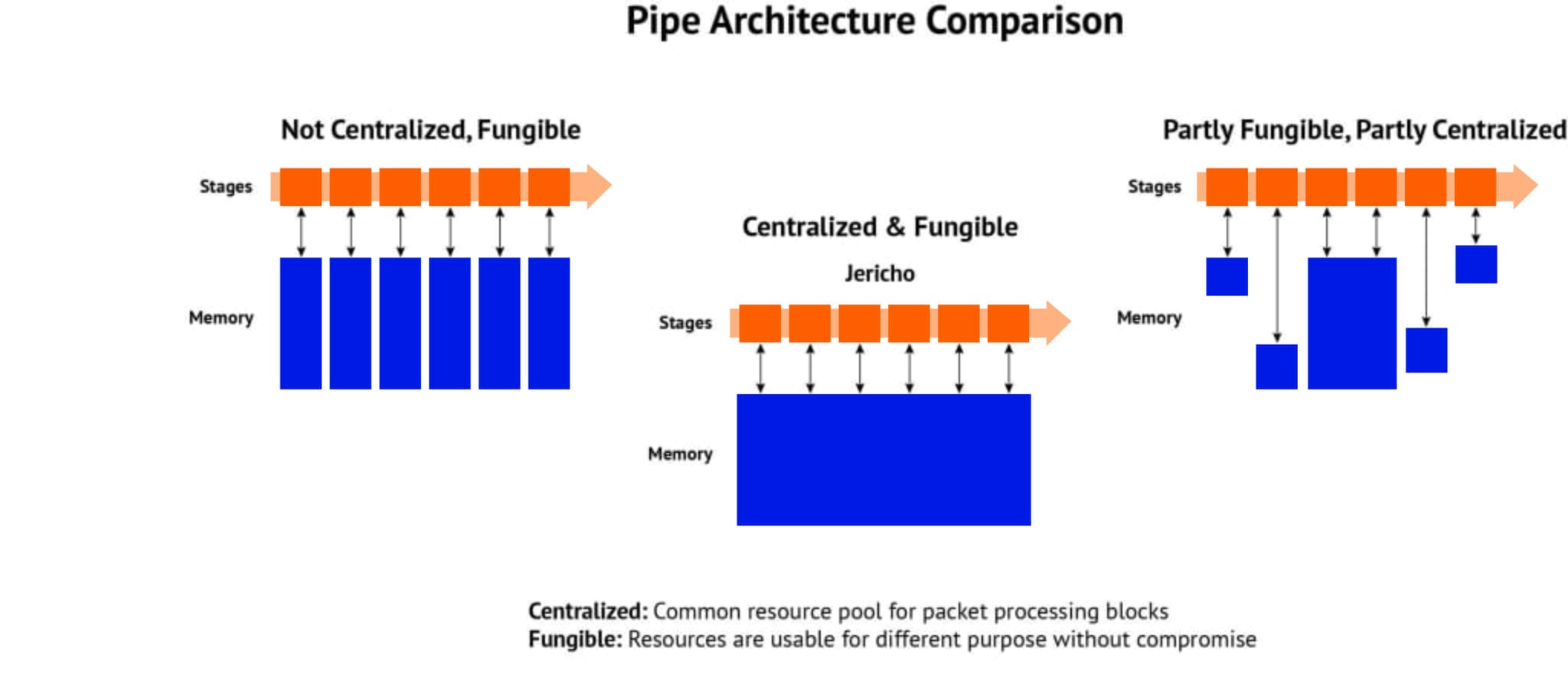The telecommunications domain is continuously evolving with new protocols, applications, and use-cases.
Selecting a suitable chipset for network equipment should be based on both its current capabilities (compute/storage/switching capacity) as well as its extensibility to support new standards and technologies.
Broadcom has eased the decision-making by introducing an in-field programmable packet processing pipeline architecture in its 7th generation of the StrataDNX switch chipsets. The programmability features in these chipsets enable adoption of new protocols and applications over already deployed networks by way of a software upgrade.
This flexibility in pipeline (Packet processing path) logic comes with no compromise in performance. This is true even where new applications involve additional lookups and processing tasks. Broadcom has branded the programmable packet processing pipeline as Elastic Pipe™.

What is new and unique in Jericho2 that differentiates it from earlier switching chipsets?
The 6thgeneration of StrataDNX™ devices such as Jericho and Qumran provide some programmability, which is limited to pipeline blocks and requires microcode upgrades. Some examples:
- Enabling parser block to identify new protocol headers, or
- Extending egress editor block to add additional layer of encapsulation.
The new 7th generation of DNX represented by the Jericho 2 device, brings in programmability that supports writing data-plane programs in C++. It is suitable for supporting a variety of pipeline logic. On a side note, this programmability feature is available in newer StrataXGS® chipsets too.
There are two distinct components that contribute to this flexibility:
- Elastic Pipe: Pipeline extenders provided by Programmable Elements Matrix are used to extend the standard pipeline supported by the device, as well as to create a whole new packet processing pipeline.
- Modular Database: Decoupled pipeline and databases allows scale configurations to be profile based which can be defined at load time. Also, packet processing related on-chip tables could be extended using KBP.

There are a several applications based on custom pipeline designs/images already delivered for Jericho2 using the above model. Some of popular ones in use by the industry are:
- Anti-DDOS
- Load-Balancer
- Session Tracker
- NAT
The latest addition to this list is the Disaggregated Scalable Firewall (DSFW) framework submitted by AT&T to the Open Compute Project (OCP) For DSFW, Jericho2 demonstrates the ability to retain Layer 4 (transport layer) session information in the ASIC, improving scalability.
In addition to data plane programmability, Broadcom has also added many other features important for 5G networks such as TSN, 1588 and GTP-u support.
Jericho2 SoC is feature-rich, therefore more complex than the 6th generation of products. The solutions must be carefully architected to make best use of available on-chip compute and storage resources so that there is enough room for future enhancements. IP Infusion’s team has been assisting its customers for the 5G front and back-haul applications using StrataDNX chipsets. Our deep expertise with the Jericho2 programmable pipeline internals and the programming model enable us to support our customers to build custom applications.
With our active participation in forums, such as Open Networking Forum, Telecom Infra Project, Broadband Forum and Open Compute Project, we understand the technology trends enables us to provide value-added solutions.

